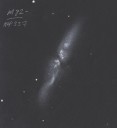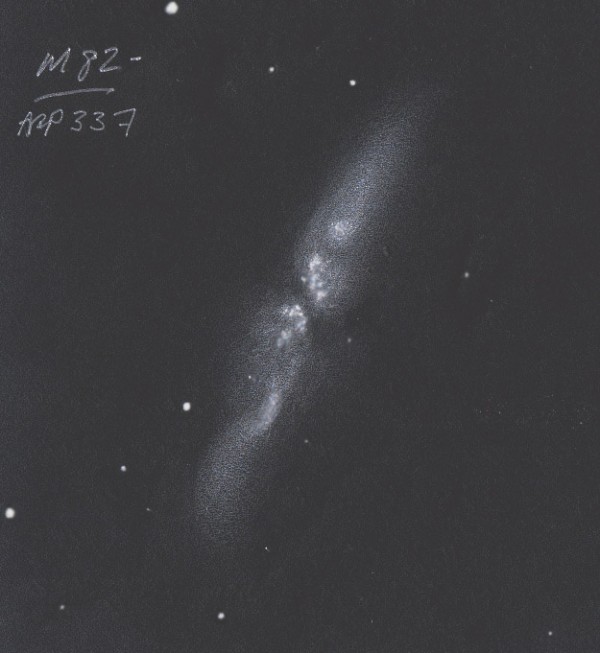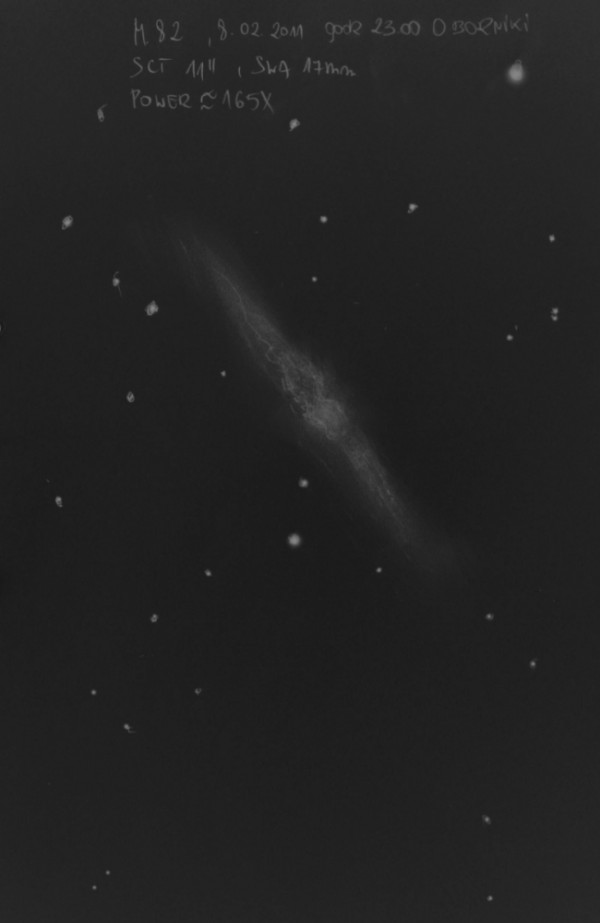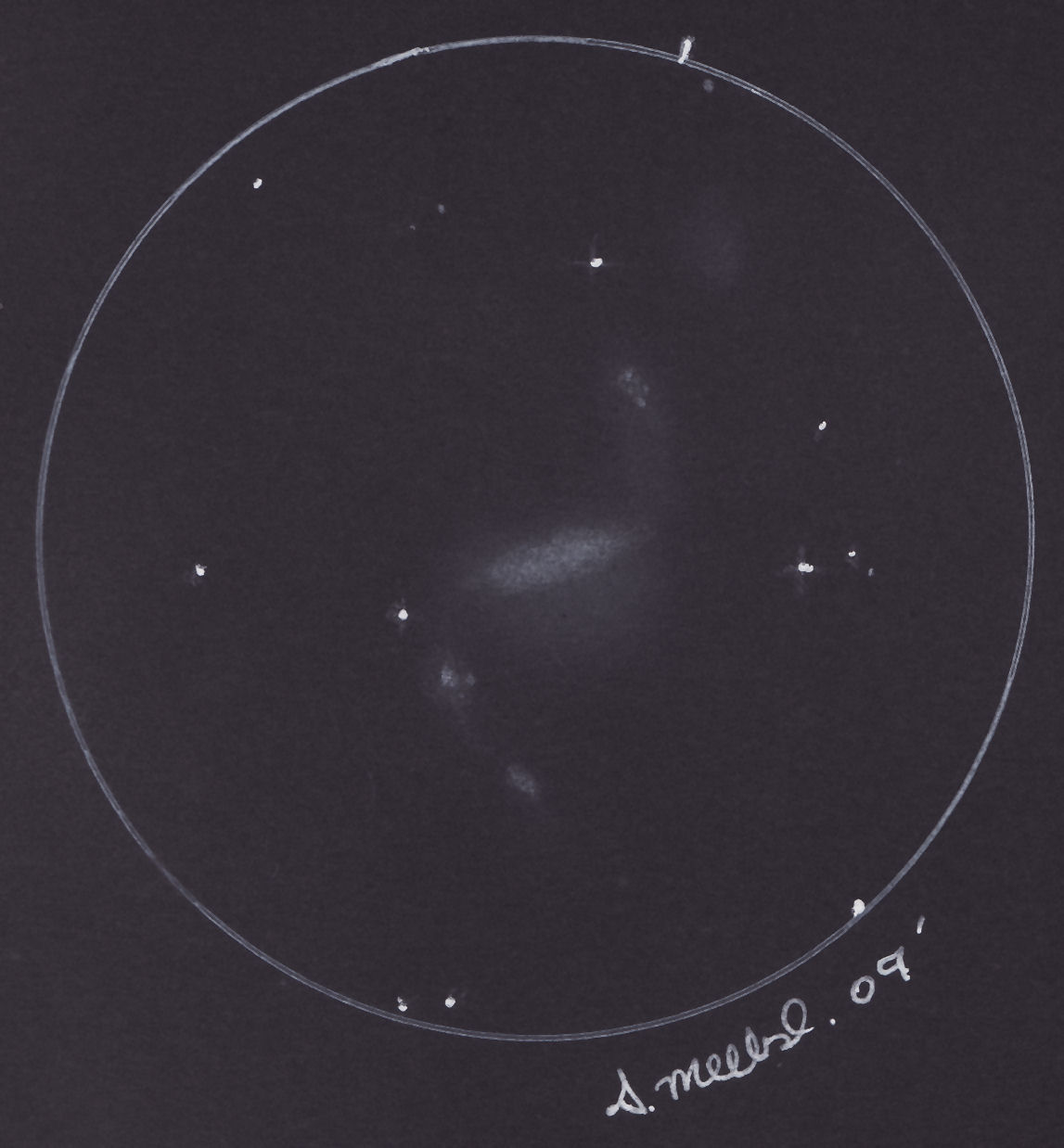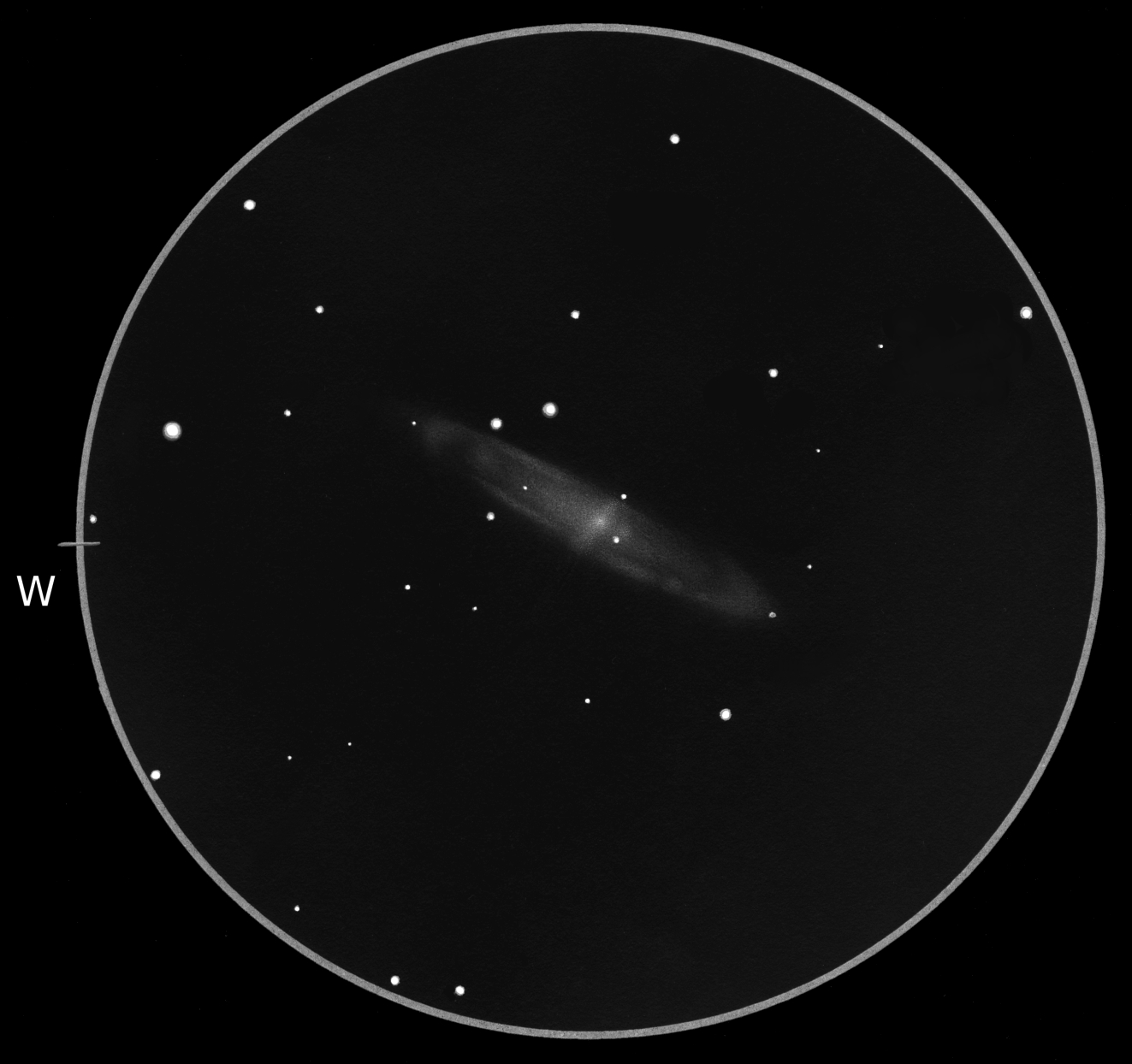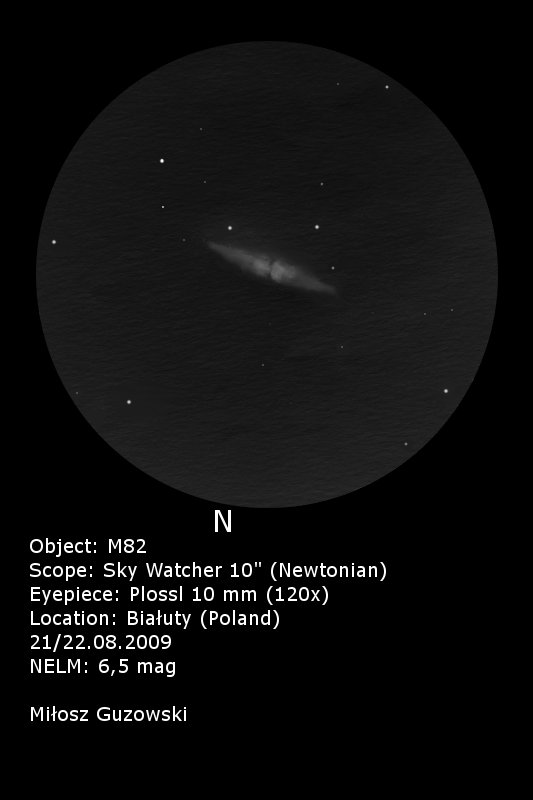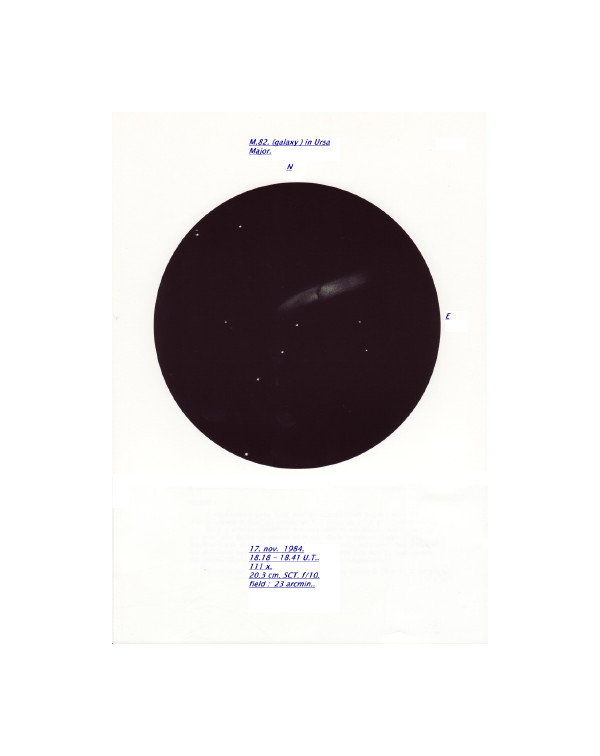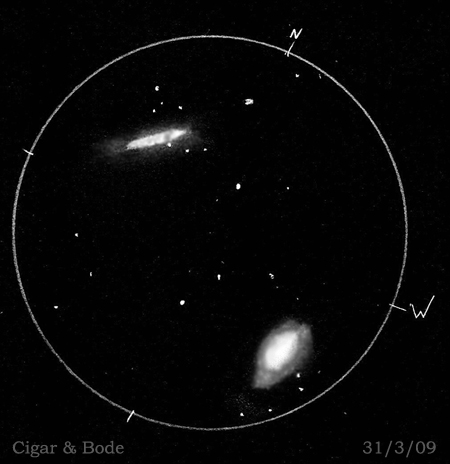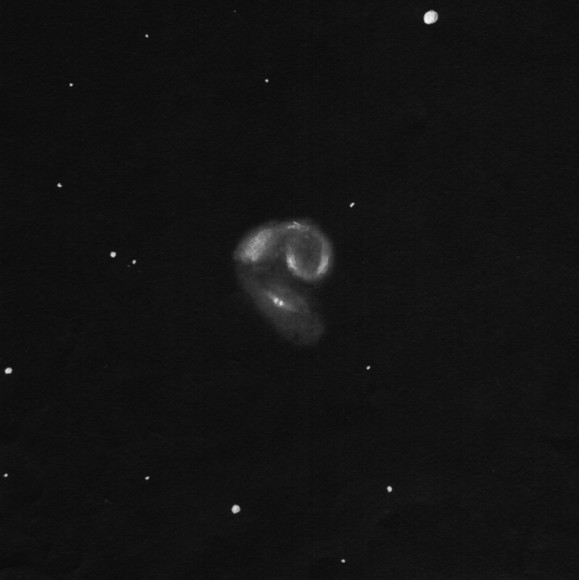M82 is also cataloged as Arp 337, which is a good indication that there’s something unusual about its shape and means that interesting things are going on here. Indeed, it’s an especially vigorous starburst galaxy and has a bi-polar outflow from it core region that’s clearly depicted in many high quality images. This galaxy has a high surface brightness and is well seen in almost (any) size telescope, but the outflow is difficult to see except in silhouette to the brighter galaxy in the background. I was fortunate to have a particularly nice view of this energetic galaxy on February 25, 2011, and what follows is an account of my observation and sketch:
A rare clear February night – on a Friday no less – graced Oregon skies on the 25th so I headed out to my good friend Chuck’s place in the Coast Range mountains west of Portland for a few hours of observing. When I got there I was treated to a pristine, unspoiled and completely overcast sky – what?! It was perfectly clear when I left home for crying out loud! A solitary cloud sprang up right over Chuck’s place late in the day, and even though I saw it forming I was sure it would clear off by dark. Nope.
After waiting a couple of hours the sky started to clear. Feeling optimistic I set up my 28 inch f/4 scope – Chuck’s scope was already patiently waiting under a tarp – and by the time I was ready the sky was 100% clear. Sometimes we get lucky! There was about 4 or 5 inches of snow except on the gravel driveway – fortunately the snow there had melted earlier in the day.
After trying out my new DGM NPB filter on M42 – most excellent – I eventually settled on sketching M82. The conditions were quite nice with surprisingly good transparency and seeing. SQM readings were in the 21.25 to 21.35 range for most of the night. Temperatures fell slowly until a low of 17F at 2am when we called it a night. The Moon was coming up about then and revealed high clouds covering most of the sky, so we had gotten the best part of the night. More good luck.
As soon as I got M82 in the scope it was immediately apparent how good the conditions were because the galaxy was “exploding” with detail. I kept putting on more magnification, and until I got to 816x I kept seeing more internal detail. Most of my sketch was done at 408x and I used higher powers to help confirm some of the smaller and more difficult details. The most pleasing view was at 408x anyway so I really enjoyed the process of making this sketch. Chuck came over and soaked in the view for a while and agreed it was one of the better views he’d had of M82 too.
As always, I saw more than expected simply because I put a good effort into sketching. I don’t recall seeing the small details near the core on either side of the dividing central dark lane before but they sure stood out well tonight. I was also surprised how little the NPB and OIII filters dimmed this galaxy. The filters didn’t reveal other details, M82 just didn’t dim as much as most galaxies do.
The sketch is a result of about 90 minutes active drawing at the eyepiece and then I cleaned it up a bit the next day before inverting it. I used an HB lead pencil and an eraser for the original sketch. I tried a slight variation of my usual technique – I had a piece of stiff cardboard behind the page of my notebook I was drawing in and that gave me a little more control over my sketch. I’m impressed by the result because the raw sketch was much nicer looking in the light of day then normal. It could be a fluke, but I’ll keep at it until I know for sure.
Howard Banich
